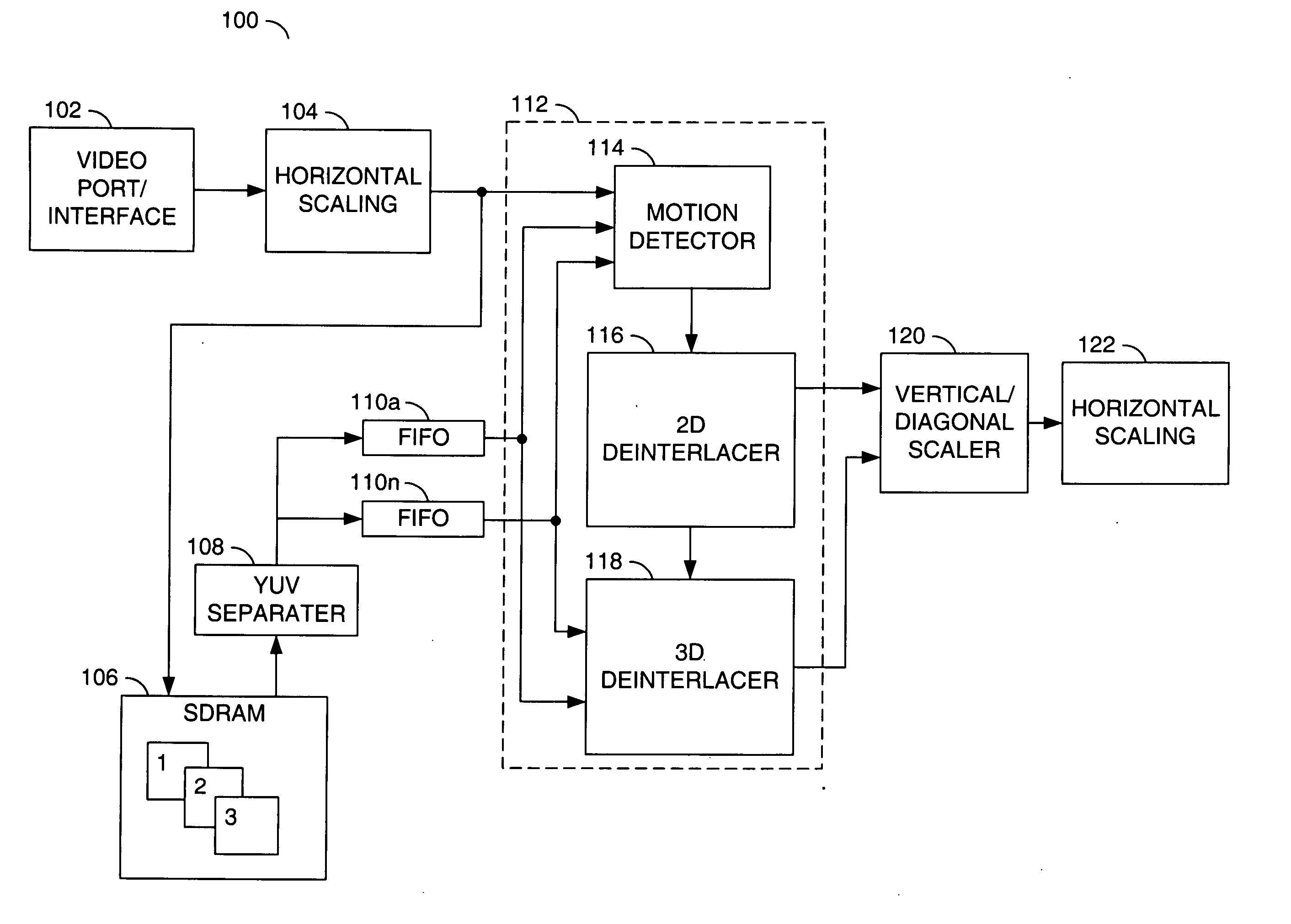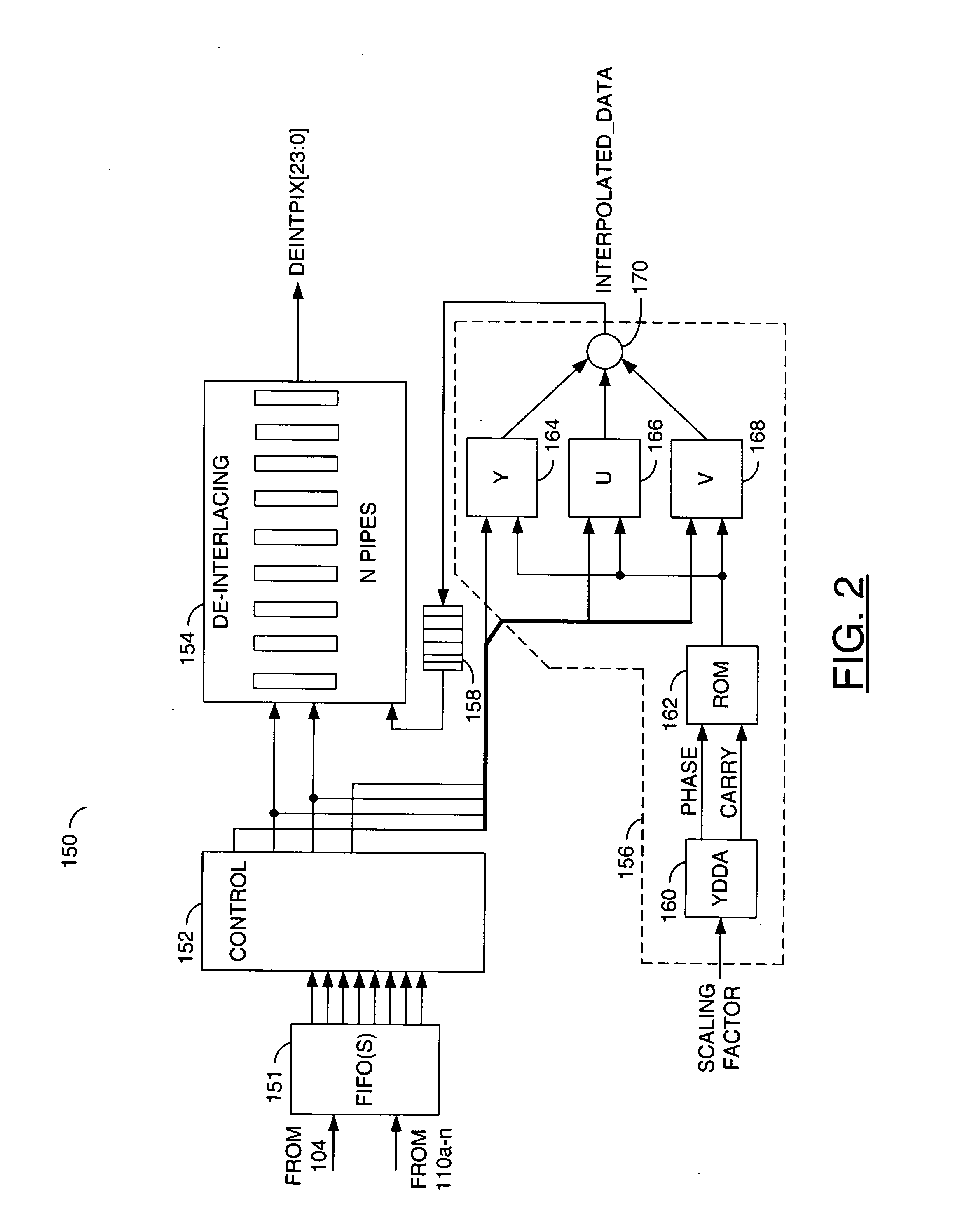Systems and methods for deinterlacing video signals
a video signal and video signal technology, applied in the field of video processing generally, can solve the problem of system cost-effective deinterlacing input video, and achieve the effect of simplifying the operation implemented, reducing the number of operations, and reducing the number of pixels
- Summary
- Abstract
- Description
- Claims
- Application Information
AI Technical Summary
Benefits of technology
Problems solved by technology
Method used
Image
Examples
Embodiment Construction
[0023] Referring now to the drawings in greater detail, there is illustrated therein structure diagrams for a display system and logic flow diagrams for processes a computer system may utilize to render images on a display panel, as will be readily understood by an artisan skilled in the field of the present invention from a study of the diagrams.
[0024] Referring to FIG. 1, a block diagram of a system 100 is shown illustrating an exemplary video deinterlacing system in which one or more preferred embodiments of the present invention may be implemented. In this exemplary configuration, video data may be presented to a port 102. The port 102 may be configured to send the video data to a horizontal scaling unit 104. The horizontal scaling unit 104 may be configured to scale the video data according to a predetermined factor in a first mode and pass the video data unscaled in a second mode. In one example, the horizontal scaling unit 104 may be configured to pass the video data directl...
PUM
 Login to View More
Login to View More Abstract
Description
Claims
Application Information
 Login to View More
Login to View More - R&D
- Intellectual Property
- Life Sciences
- Materials
- Tech Scout
- Unparalleled Data Quality
- Higher Quality Content
- 60% Fewer Hallucinations
Browse by: Latest US Patents, China's latest patents, Technical Efficacy Thesaurus, Application Domain, Technology Topic, Popular Technical Reports.
© 2025 PatSnap. All rights reserved.Legal|Privacy policy|Modern Slavery Act Transparency Statement|Sitemap|About US| Contact US: help@patsnap.com



